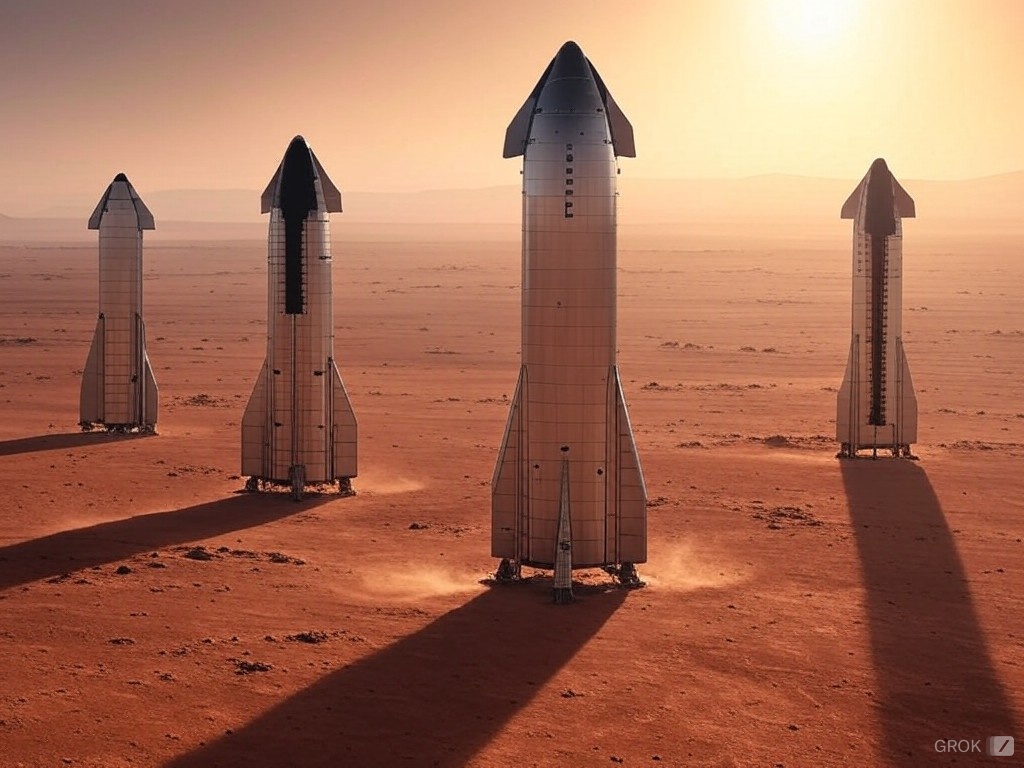SpaceX Mars Mission: Unmanned 2026, Manned 2029? A Closer Look at Elon Musk's Ambitious Plan
Elon Musk's SpaceX has set its sights on Mars, aiming for an ambitious timeline: an unmanned mission by 2026 and a manned mission by 2029. This audacious goal has captivated the world, sparking both excitement and skepticism. But is it realistic? Let's delve into the details and examine the challenges and potential breakthroughs that lie ahead.
The SpaceX Mars Timeline: A Bold Vision
SpaceX's overarching plan involves a phased approach to Mars colonization. The proposed timeline is ambitious, but not without precedent given SpaceX’s track record of innovation.
-
2026: Unmanned Mission – Starship's Crucial Test: The 2026 unmanned mission is critical. It will test the Starship spacecraft and Super Heavy rocket system's capabilities in a deep-space environment, assessing its ability to land and potentially return from Mars. This mission will focus on proving the technology and gathering crucial data for future manned missions. Success here is paramount. This involves not only a successful launch and landing but also a comprehensive analysis of the Martian environment and resource availability.
-
2029: Manned Mission – The First Humans on Mars?: Pending the success of the 2026 mission, SpaceX plans to send its first crewed mission to Mars in 2029. This mission will face immense challenges, from the long-duration space travel and its effects on the human body to the complexities of landing and establishing a sustainable base on the Red Planet. Technological advancements in life support systems, radiation shielding, and in-situ resource utilization (ISRU) will be crucial.
The Technological Hurdles: Starship and Beyond
The success of SpaceX's Mars mission hinges on the development and successful deployment of Starship, a fully reusable spacecraft designed for interplanetary travel. This system is unlike anything ever built, and faces significant hurdles:
-
Starship's Development: While numerous test flights have been conducted, there are still challenges to overcome regarding the reliability and efficiency of the Starship and Super Heavy systems. Reaching Mars requires flawless performance, especially during crucial atmospheric entry and landing maneuvers on Mars.
-
In-Situ Resource Utilization (ISRU): ISRU, the process of using Martian resources to create fuel, water, and building materials, is essential for long-term sustainability on Mars. SpaceX is investing heavily in researching and developing ISRU technologies, a key factor to lowering mission costs.
-
Radiation Shielding: The intense radiation in deep space poses a significant threat to astronauts. Developing effective and lightweight radiation shielding is paramount for ensuring astronaut safety during the long journey to and from Mars.
Beyond the Technology: The Ethical and Logistical Considerations
Beyond the technological challenges, the SpaceX Mars mission raises significant ethical and logistical questions:
-
Environmental Impact: Introducing terrestrial life to Mars raises concerns about planetary protection and the potential for contamination. Strict protocols and careful planning are essential to minimize this risk.
-
Cost and Funding: The cost of the Mars mission is astronomical. Securing the necessary funding and demonstrating a clear return on investment will be crucial for sustaining the project.
-
International Collaboration: A mission of this magnitude likely requires international collaboration. Partnerships with space agencies and private companies could significantly boost resources and expertise.
Conclusion: A Giant Leap, or a Long Shot?
SpaceX's Mars mission represents a monumental undertaking. While the 2026 and 2029 timelines are ambitious, the potential rewards – scientific discovery, resource utilization, and the expansion of human civilization beyond Earth – are immense. The coming years will be critical in determining if this ambitious vision becomes reality. Continued monitoring of SpaceX's progress and developments in space exploration technology will be crucial to assessing the feasibility of this incredible endeavor. Only time will tell if humanity will set foot on Mars within this decade, but the effort itself is a testament to human ambition and ingenuity.
